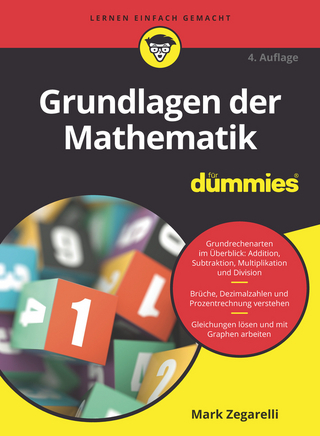
Fleeting Footsteps: Tracing The Conception Of Arithmetic And Algebra In Ancient China
Seiten
1992
World Scientific Publishing Co Pte Ltd (Verlag)
978-981-02-3696-0 (ISBN)
World Scientific Publishing Co Pte Ltd (Verlag)
978-981-02-3696-0 (ISBN)
- Titel z.Zt. nicht lieferbar
- Versandkostenfrei innerhalb Deutschlands
- Auch auf Rechnung
- Verfügbarkeit in der Filiale vor Ort prüfen
- Artikel merken
Provides considerable evidence to show that the Hindu-Arabic numeral system, in spite of its commonly accepted name, has its origins in the Chinese rod numeral system and was used to perform addition, subtraction, multiplication, division and other arithmetric operations.
The Hindu-Arabic numeral system (1, 2, 3, …) is one of mankind's greatest achievements and one of its most commonly used inventions. How did it originate? Those who have written about the numeral system have hypothesized that it originated in India; however, there is little evidence to support this claim.This book provides considerable evidence to show that the Hindu-Arabic numeral system, in spite of its commonly accepted name, has its origins in the Chinese rod numeral system. This system was in use in China from antiquity till the 16th and 17th century. It was used by officials, astronomers, traders and others to perform addition, subtraction, multiplication, division and other arithmetric operations, and also used by mathematicians to develop arithmetic and algebra.Sun Zi Suanjing (The Mathematical Classic of Sun Zi) written around 400 AD is the earliest existing work to have a description of the rod numerals and their operations. With this treatise as a central reference, the first part of the book discusses the development of arithmetric and the beginnings of algebra in ancient China and, on the basis of this knowledge, advances the thesis that the Hindu-Arabic numeral system has its origins in the rod numeral system. Part Two gives a complete translation of Sun Zi Suanjing.
The Hindu-Arabic numeral system (1, 2, 3, …) is one of mankind's greatest achievements and one of its most commonly used inventions. How did it originate? Those who have written about the numeral system have hypothesized that it originated in India; however, there is little evidence to support this claim.This book provides considerable evidence to show that the Hindu-Arabic numeral system, in spite of its commonly accepted name, has its origins in the Chinese rod numeral system. This system was in use in China from antiquity till the 16th and 17th century. It was used by officials, astronomers, traders and others to perform addition, subtraction, multiplication, division and other arithmetric operations, and also used by mathematicians to develop arithmetic and algebra.Sun Zi Suanjing (The Mathematical Classic of Sun Zi) written around 400 AD is the earliest existing work to have a description of the rod numerals and their operations. With this treatise as a central reference, the first part of the book discusses the development of arithmetric and the beginnings of algebra in ancient China and, on the basis of this knowledge, advances the thesis that the Hindu-Arabic numeral system has its origins in the rod numeral system. Part Two gives a complete translation of Sun Zi Suanjing.
The Sun Zi Suanjing (the mathematical classic of Sun Zi); numbers and numerals; the fundamental operations of arithmetic; the common fraction; on extracting roots of numbers; tables of measures; the various problems; socioeconomic aspects in Sun Zi's China; did the Hindu-Arabic numeral system have its origins in the rod numeral system?; a translation of Sun Zi Suanjing.
| Erscheint lt. Verlag | 1.10.1992 |
|---|---|
| Verlagsort | Singapore |
| Sprache | englisch |
| Themenwelt | Mathematik / Informatik ► Mathematik ► Allgemeines / Lexika |
| Mathematik / Informatik ► Mathematik ► Algebra | |
| Mathematik / Informatik ► Mathematik ► Geschichte der Mathematik | |
| Naturwissenschaften | |
| ISBN-10 | 981-02-3696-4 / 9810236964 |
| ISBN-13 | 978-981-02-3696-0 / 9789810236960 |
| Zustand | Neuware |
| Haben Sie eine Frage zum Produkt? |
Mehr entdecken
aus dem Bereich
aus dem Bereich


